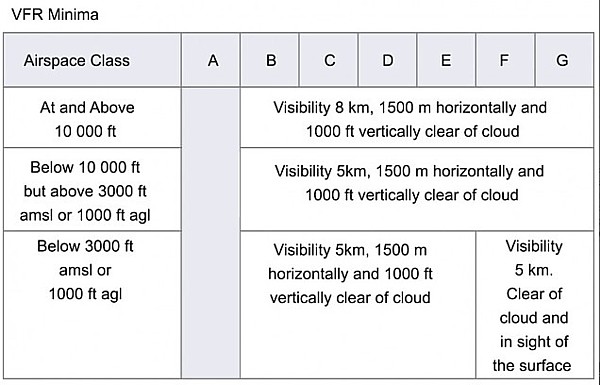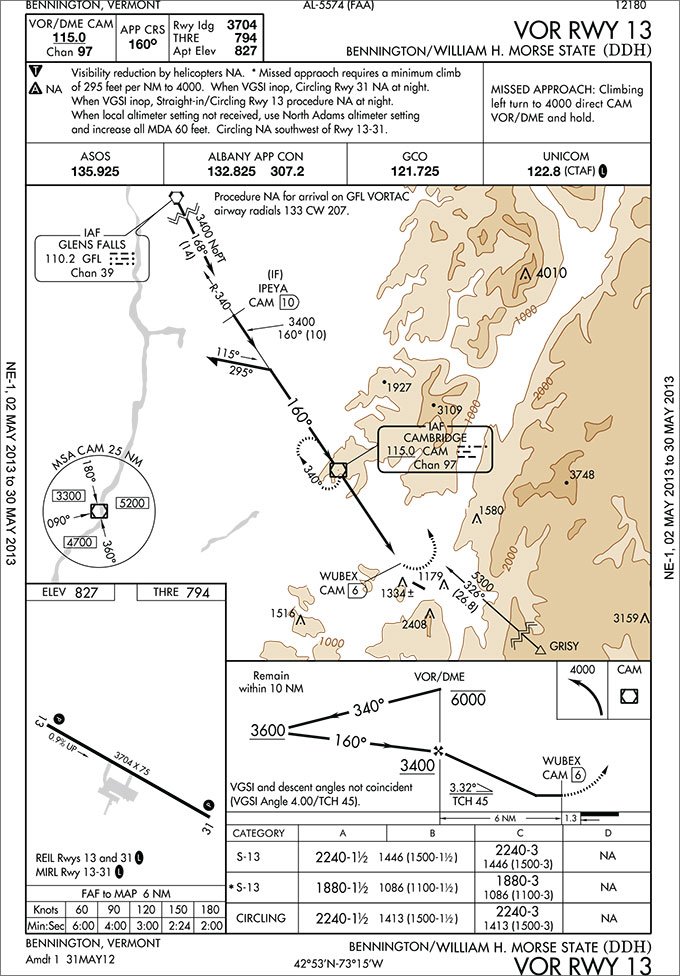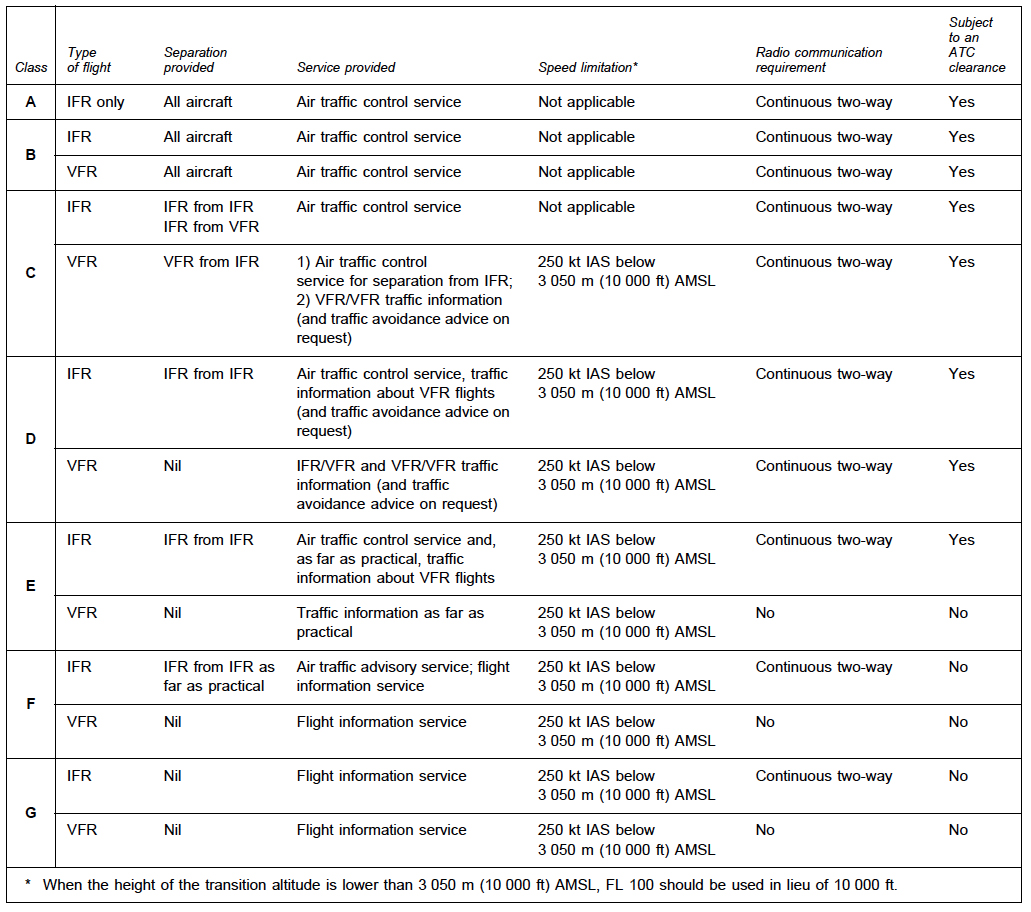class g airspace visibility requirements
The requirements are slightly less restrictive in Class G airspace with a less restrictive daytime visibility below 10000 feet MSL 1 statute mile only and below 1200 feet. Class C Airspace Class D Airspace Class E Airspace Class G Airspace.

Visual Meteorological Conditions Wikipedia
135609 VFR ceiling and visibility requirements for Class G airspace.

. Communication Requirements First things first there arent any. A Unless otherwise specified in the certificate holders operations specifications when conducting VFR helicopter. Class B airspace has some of the most stringent equipment and communication requirements of any airspace.
All operations in Class A Class B Class C. B No person may operate a helicopter under VFR in Class G airspace at an altitude of 1200 feet or less above the surface or within the lateral boundaries of the surface areas of Class B Class. The following weather minimums in Class G clear visibility for you and other pilots flying high in the sky.
Typically Class G airspace includes all of the airspace below 14500 ft. No person may operate an. Lets start with the visibility part of VFR.
Of airspace and altitudes. E For the purpose of. Understanding the rationale behind the different requirements might help you remember them more easily.
All operations in Class A Class B Class C and Class D. Basic VFR Weather Minimums. That is not otherwise designated Class B C or D airspace.
And Class E is more restrictive than Class G airspace. Since class A airspace is normally restricted to instrument flight only there are no minimum visibility requirements. VFR flight is based on the principle of see and avoid.
2 If ground visibility is not reported at that airport unless flight visibility during landing or takeoff or while operating in the traffic pattern is at least 3 statute miles. 12 rows No person may operate an ultralight vehicle when the flight visibility or distance from clouds is less than that in the table found below. For Class B C D and E airspace below an altitude of 10000 MSL the basic VFR weather.
135609 VFR ceiling and visibility requirements for Class G airspace. Flight visibility Distance from clouds. It surrounds the countrys busiest airports.
Class A airspace was formerly known as Positive Control Airspace. Airspace Requirements for Weather Minimums. On the other hand Class G airspace has four different sets of altitude-dependent minimums.
Class G Is The Most Lenient And Confusing. Class G minimum weather requirements exist so that you can see and avoid other aircraft and. But it has some of.
Class G airspace uncontrolled is that portion of airspace that has not been designated as Class A Class B Class C Class D or Class E airspace. I say basic because under certain conditions in Class G airspace during. Below 10000 feet mean sea level basic VFR visibility is three statute miles.
Flight Rules Pilot Equipment Requirements. Depending on how high you fly and the time of day within Class G airspace your visibility requirement could range anywhere from. A Unless otherwise specified in the certificate holders operations specifications when conducting VFR helicopter.
Class D airspace is more restrictive than Class E or Class G airspace. No person may operate an ultralight vehicle when the flight visibility or distance from clouds is less than that in the table found below. Class G airspace is the only form of uncontrolled airspace in the United States.

Vfr Cloud Clearances Pilot Training For Ga

Helicopter Instrument Procedures Part Three
Regulations Vfr Minimums Learn To Fly Blog Asa Aviation Supplies Academics Inc

Private Pilot Airplane Lesson 4 3 14cfr Part 91 Faithful Guardian Aviation

Faa Airspace For Vfr Flight Youtube

Pilot S Guide To Class E Airspace Flight Training Central
What Are The Vfr Weather Minimums For Class C Airspace Quora

Federal Register Helicopter Air Ambulance Commercial Helicopter And Part 91 Helicopter Operations

Vfr Unleashed Are We Allowed To Do That Aopa

Pilot S Guide To Class E Airspace Flight Training Central

Ecfr 14 Cfr 135 609 Vfr Ceiling And Visibility Requirements For Class G Airspace
Powered Parachute Flying Handbook Chapter 8 Airspace Classification And Requirements

On Your Own In Class G Ifr Magazine

Airspace Class United States Wikipedia

These Are 5 Of The Hardest Questions On The Faa Knowledge Test

